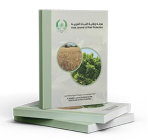F.M. Al Hadi* and M.S. Mansor
Department of Plant Protection, College of Agriculture, Tikrit University, Iraq.
Email address of the corresponding author: [email protected]
Pages 235-240
A Regional Scientific Journal Published Four Times a Year by the Arab Society for Plant Protection


F.M. Al Hadi* and M.S. Mansor
Department of Plant Protection, College of Agriculture, Tikrit University, Iraq.
Email address of the corresponding author: [email protected]
Pages 235-240
Samples for this study were collected from some fields infested with the green peach aphid, Myzus persicae and the black aphid, Aphis fabae in the Shirqat region, Saladin Governorate, Iraq, during the period 10/1/2022-1/8/2023. The study aimed to test the effect of the insect host species on the efficiency of the aphid parasitoid Aphidius matricariae (Hymenoptera: Aphidiidae) rearing. Three aphid species hosts for the parasitoid were tested: the green peach aphid, Myzus persicae, the watermelon aphid, Aphis gossypii, and the black bean aphid, Aphis fabae. The study was carried out under laboratory conditions, and the parasite was obtained from cultivated fields in the Shirqat region, Saladin Governorate, Iraq. The identification of aphids was based on the taxonomic keys provided by the Natural History Museum, University of Baghdad. The insect host preference and the vitality and efficiency of the parasite A. matricariae was assessed. Laboratory results showed that the highest rate of parasitism were on the green peach aphid, which gave the highest percentage of mummies (47.00%), and the highest rate of adult emergence, three weeks after the beginning of parasitism, was 53.33%, which qualifies the green peach aphid to be the selected host for mass rearing of the parasitoid and subsequent release in the farmers’ fields.
Aphidius matricariae, host species, Myzus persicae, Aphis fabae, Aphis gossypii.

